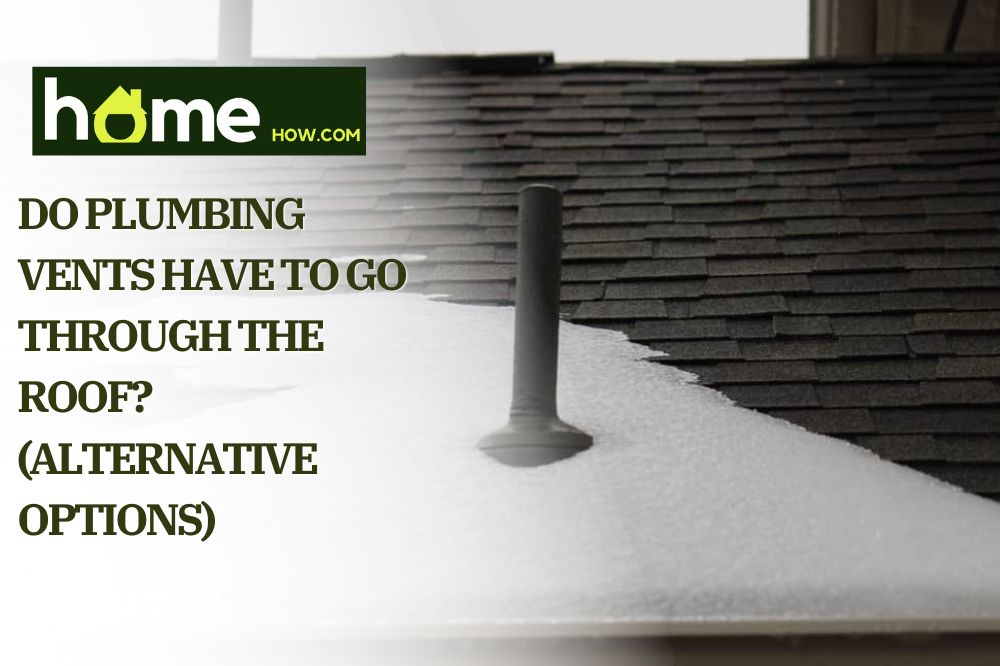Are you remodeling the plumbing system in your house? If yes, then you must have one big question in mind – do plumbing vents have to go through the roof?
These vents are difficult-to-install, which means an increased risk of leakage into the house walls. Even if you install them properly, the vents are open at the top. Anything can fall in the pipes and block the plumbing system!
Well, while plumbing vents don’t have to go through the roof, this method perfectly complies with the IRC termination code. But you can still choose other methods if they fulfill code requirements.
So, without further ado, let’s discuss different ways to install plumbing vents, their pros & cons, and much more.
What are Plumbing Vents?
A plumbing vent is part of the house’s ventilation system. It removes harmful gases and unpleasant odors from the drainage pipes. It also lets fresh air enter the plumbing network, which has 3-distinct benefits.
- Regular air pressure
- Enhance pipe drainage & water flow
- Prevent foul sewage smell
This plumbing vent is typically a vertical pipe that runs along the house wall and goes through the roof to connect to the main vent. Although it has no running water in it, some people still call it a drain pipe (because of the appearance and connection to the plumbing system).
Importance of Plumbing Vents
We have already discussed the purpose of plumbing vents in a house. But what if you skipped it completely? Here’s what happens if you don’t vent your plumbing system:
- Poor water flow in faucets
- Loud, gurgling sounds in your drain pipes
- Slow draining in the shower, sink, and other areas
- Standing water
- Foul sewage smell
All these issues suggest one big problem; a clogged drain pipe. You might be able to fix it temporarily by using drain cleaners and other chemicals. But know that it is not a long-term solution.
More debris and sediments will build up later in the drain pipe. This will lead to further, complex plumbing issues. In some cases, the pipes may get damaged and require a replacement.
IRC Vent Termination Requirement
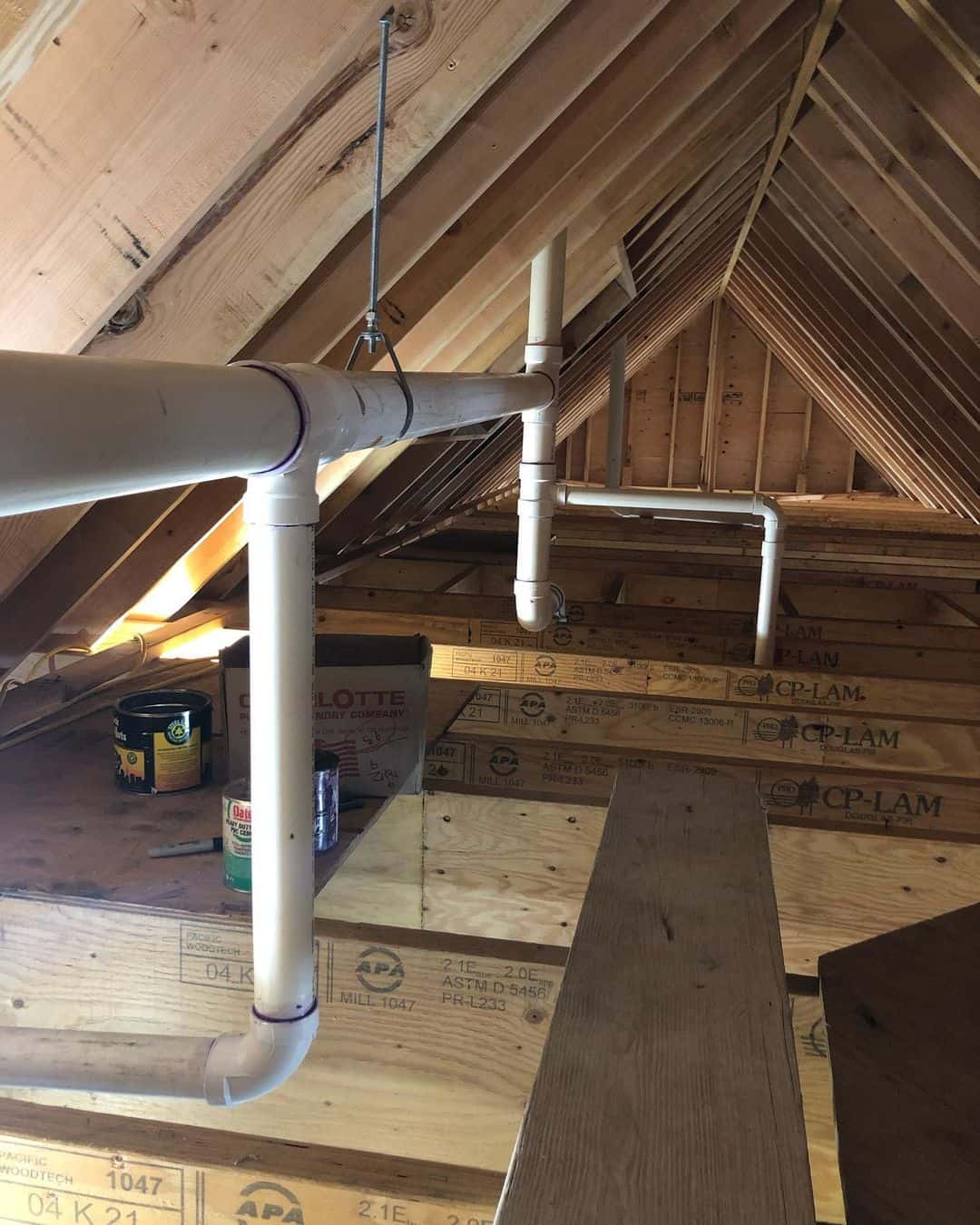
Plumbing vents are essential to keep the drainage flow smooth. But they also emit sewer gases and odor. So, it’s important to install them in a way that those harmful emissions don’t make their way back into the house.
The International Residential Code (IRC) has set a few standard requirements that ensure the safe termination of gases. These include:
- Roof vents should terminate at least 6 inches above the surface. If there’s a lot of snow in your area, the vent should open 6 inches above the average snow accumulation.
- Wall vents must terminate a minimum of 10 feet above the ground. It cannot open below a vented soffit.
- If a vent opens directly below an air intake (window or door), it should be 3 feet above it or 4 feet under it. However, this condition doesn’t apply if the vent is 10 feet away from the air intake.
- Vents should terminate 7 feet above the roof surface if people also walk on it.
- If a vent opens near the air admittance valve of the attic, it should terminate 6 inches above the insulation.
- Side wall vents should have a coarse mesh screen to protect birds and rodents from entering the vent by accident.
As you can see, the IRC only restricts the placement of the plumbing vent. It doesn’t limit you to any specific installation method for the venting system.
Can Plumbing Vents Go Out the Wall Instead of the Roof?
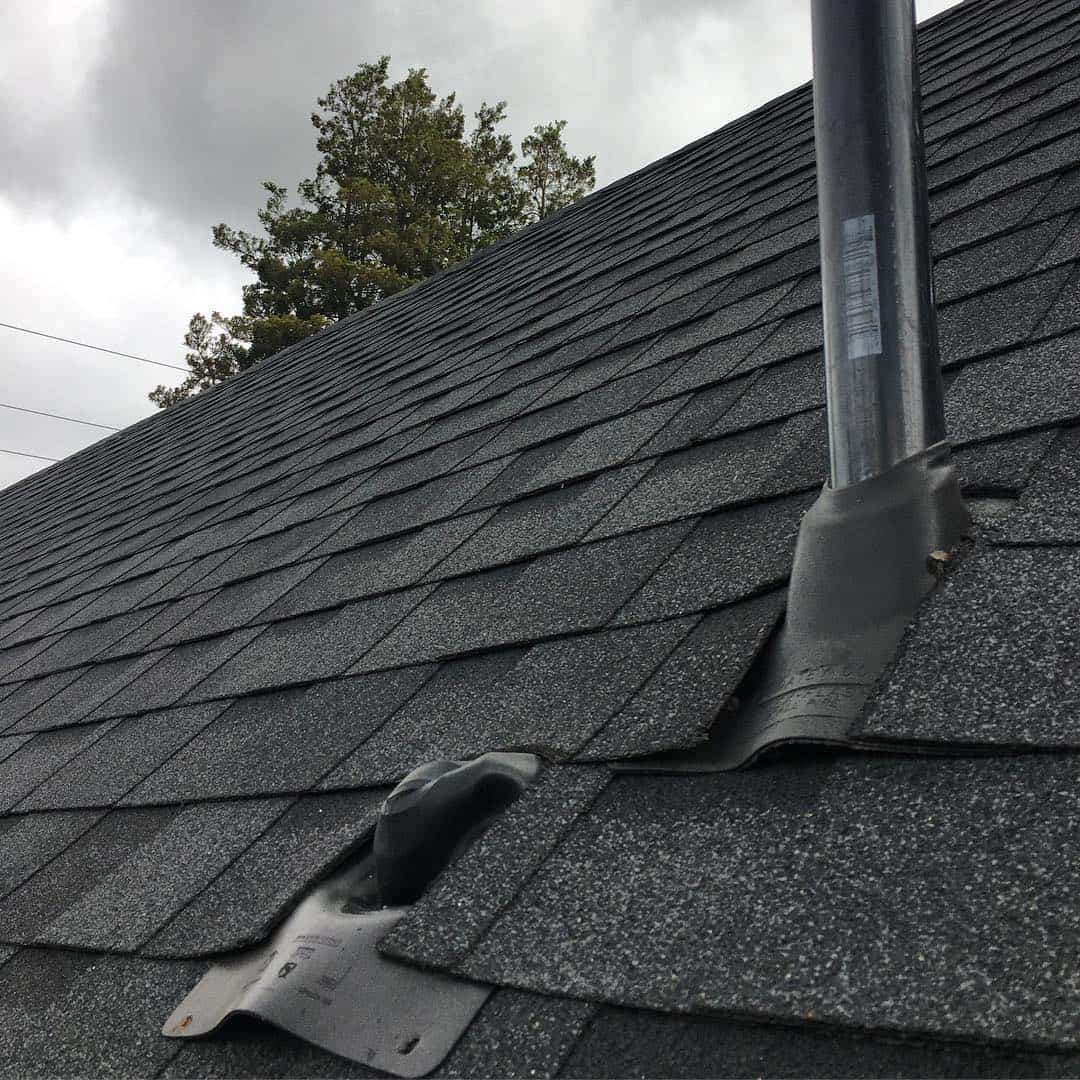
Yes, plumbing vents can go out the wall instead of the roof. But both methods have their pros and cons that should be considered.
Roof Venting
Roof plumbing vents are the most common choice because they easily comply with the IRC code. So, you can easily find professionals to install the vents at cheaper rates. You can also do the project yourself!
However, the biggest advantage of roof vents is that they prevent harmful gases from re-entering the house. There is no risk of them being trapped in the pipelines. Plus, these vents are high up on the roof, which doesn’t affect the house exterior.
With that said, these plumbing vents are installed after cutting through the roofing material. This introduces a risk of leakage into the house. Of course – professionals will use caulk or flashing to seal the gaps. But if you don’t maintain them regularly, the seal can wear off and cause leakage.
Another problem is the uncovered opening of the vents. Dirt, nesting materials, leaves, and snow can easily fall into the vents and block the drain pipes. You can resolve this by asking your plumber to add a metallic mesh cover on the openings.
Sidewall Venting
If drain blockage is your biggest concern, a sidewall plumbing vent will be appropriate. It doesn’t have a platform beneath it, which means animals cannot enter it. The air vent also has an angled cover that prevents dirt, snow, and other unwanted materials from entering the pipe.
But there are many house windows and doors located on the sidewall. This means the chances of harmful sewer gas and odor re-entering the house are high. Unsuitable wind direction can also create negative air pressure inside the vent.
While this may not seem like a huge issue, it can disrupt the flow of plumbing and lead to a foul smell. The sewer may even overflow in some cases. What’s more, sidewall vents cannot be installed in cold climatic zones. It’s because the high wind entry can freeze the vents.
Roof VS Sidewall Plumbing Vents Chart
| Roof Venting | Side Wall Venting | |
| Pros |
|
|
| Cons |
|
|
Is There Any Other Option?
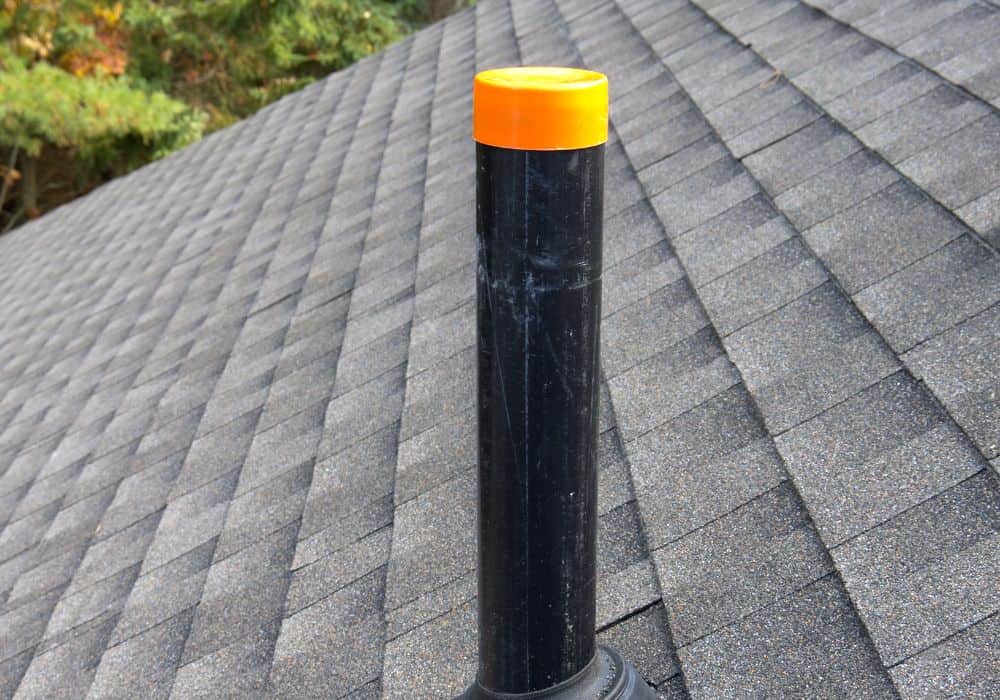
Sidewall and roof venting are some common ways to install plumbing vents. But they aren’t the only methods. You can also vent the plumbing system through soffits!
A soffit is a finishing material (e.g. fiber cement) that covers the underside of the roof eaves. It is made of a lighter material than roofs and walls. This makes it easier to cut through and install the plumbing vents.
Plus, the wind doesn’t blow directly into the soffit. As a result, there are fewer chances of negative air pressure developing in the vents and causing flow issues. Animals are also unable to reach into the vent because of the hidden soffit location.
However, plumbing vents that run through soffits hardly comply with the IRC. According to the code, the vent should be away from doors, windows, and other house openings. Since most soffits are present near these openings, it can make termination non-compliant.
The soffit vent lines also release gases in a downward direction. If the air doesn’t disperse properly, the smell can linger and cause health issues for the locals.
How Many Plumbing Vents Should a House Have?
The International Residential Code (IRC) only permits the use of one vent stack per house. This means that only one plumbing vent will emit harmful gases and odors from your draining system into the air.
But what if your house has multiple bathrooms and kitchens?
It doesn’t matter how complex the drainage system of your residence is. The IRC prohibits the use of 2 or more vents. Instead, you can use a plumbing fixture to increase the airflow for better drainage. Some examples include:
1. Air Admittance Valve (AAV)
Also called a Studor vent or mini vent, the air admittance valves are a one-way device that controls the airflow inside the plumbing network. It ensures proper venting without requiring a connection to the stack vent.
2. Island Vent
It’s a special vent type designed for island sinks. It loops as high as possible inside the cabinet and then heads under the floor to be connected to the main plumbing vent pipe.
3. Combination Waste and Vent
This is not a fixture but a combined system that facilitates the movement of both wastewater and airflow in the drainage pipes. Multiple pipelines from the sink, bathtub, toilet, and other places connect in a special way to ensure the flow is smooth.
FAQs
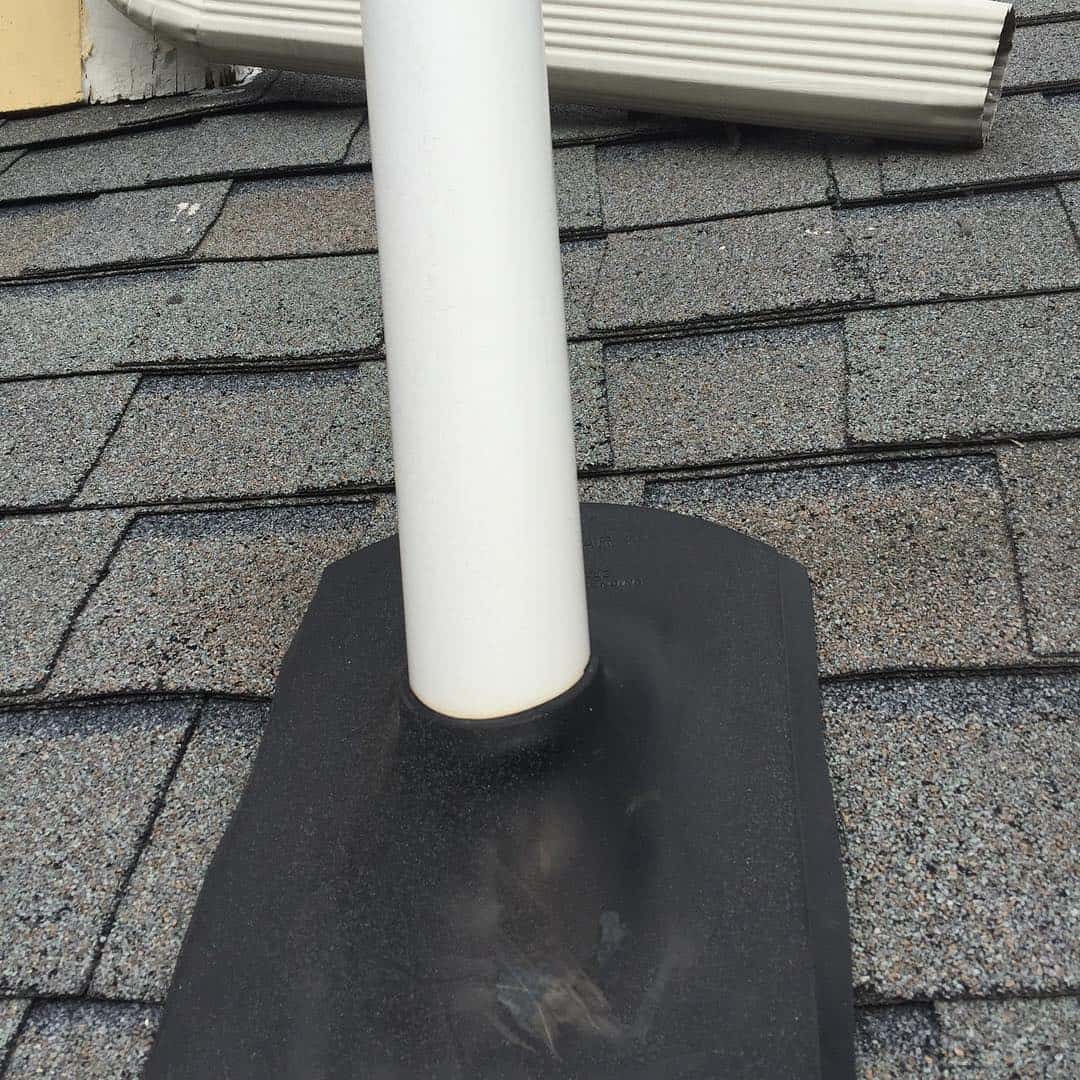
1. How to vent plumbing without going through the roof?
You can vent plumbing without going through the roof by the sidewalls and soffits. However, be careful and install it in accordance with IRC.
2. Do plumbing vents have to be straight?
Yes, plumbing vents have to be straight. If there are bends or loops, moisture, and debris will accumulate in the drain line. This will lead to blockage and poor ventilation.
3. Can you run a plumbing vent on the outside of a house?
Yes, you can run a plumbing vent on the outside of a house as long as it complies with the IRC and your local code.
Last Words
Plumbing vents are a mandatory feature of all buildings. However, the International Residential Code (IRC) doesn’t restrict you to install them through the roof. You can also install them through the wall or soffit.
It’s recommended to seek professional assistance in this project. If you plan to add or remodel the vents yourself, make sure you are following the IRC strictly to avoid future problems. Good luck!
